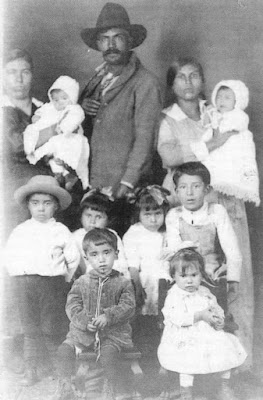Joe was born in a boxcar in a Midwestern community. Willie was born on the same street.
Most of the homes on this street had only dirt floors, no indoor plumbing and no electricity.
The street had no city sewers and limited access to public water.
When World War II broke out, Willie requested permission from his parents to enlist in the army, to defend his country. Joe was drafted in 1944.
Joe’s brother, Frank, a combat engineer, was killed in Burma in June 1944. Willie, trained as a paratrooper, was killed on October 6, 1944. Joe himself was killed during an attack by German tanks on April 14, 1945, just days before the war ended.
All three men were heroes, all three men had been children of Mexican immigrants who had fled Mexico after a coup (supposedly assisted by the U.S. government) had engulfed the country in chaos, according to PBS station WQPT. The families were recruited by the Chicago, Rock Island, and Pacific Railroad, exempt from the Immigration Act of 1917, to keep the American economy going.
The two families (both with the surname of Sandoval) lived on a small street in Silvis, Illinois.
“The muddy block and a half long street was home to Mexican immigrants who worked for the Rock Island Railroad,” according to Hispanic Americans In World War II. “The 22 families who lived on the street were a close-knit group. From this small street, 84 men served in World War II, Korea, and Vietnam.”
“Eight of the soldiers never returned home,” according to Carlos Harrison, author of "The Ghosts of Hero Street: How One Small Mexican American Community Gave So Much in World War II and Korea."
Three of those soldiers were Joe and Frank Sandoval and Willie Sandoval.
“Of the 22 families on Second Street, the two Sandoval families had a total of thirteen men who served in the armed forces,” according to Hispanic Americans In World War II.
“The street contributed more men to military services in World War II and Korea than any other street of comparable size in the U.S. In total, eight men from Hero Street gave their lives during World War II—Joseph Gomez, Peter Macias, Johnny Muños, Tony Pompa, Frank Sandoval, Joseph "Joe" Sandoval, William "Willie" Sandoval and Claro Solis.”
The street would finally be recognized by the Department of Defense, earning the obscure unpaved road a name: Hero Street, according to the Chicago Daily Herald.
But, for many years, the street was largely ignored, according to Hola America. “After the wars ended, no one seemed to care much, except for family members and close friends who mourned the heroes’ deaths all the days of their lives.”
This is a new story from the Jon S. Randal Peace Page for Hispanic Heritage Month.
Due to discrimination, the street was the only block in Silvis that wasn’t paved.
“When it rained, the street turned to quicksand. You just sank into it,” said former Silvis City Councilman Joe Terronez.
“The mud sometimes was so bad that when the heroes’ bodies – those that could be found — were returned for wakes in their families’ homes, the caskets had to be carried up the street by hand — the street was too muddy for a hearse’s weight,” according to Hola America and Marc Wilson, the author of the book “Hero Street U.S.A.”
“Shamefully, the discrimination continued after the war when the survivors were denied membership in the Silvis post of the VFW (Veterans of Foreign Wars),” according to WQPT.
“The 90 or so Mexican-Americans veterans who returned to the neighborhood from service after World War II and Korea were blackballed — denied membership in the Silvis chapter of the VFW. They had to form their own VFW chapter, Post 8890 in nearby East Moline.”
“As justice is served, [that post] survived and the one that denied them didn't.”
~~~~~
According to “Hero Street: A Historical Documentary Film Series”:
“Joe was his parents’ first American-born child. His father nicknamed him Estrellito (Little Star). At age 7, Joe began to help his parents by translating documents related to financial, legal, or tax matters. After his family moved from the rail ard to a house on 2nd Street, he worked and with his brother Frank to add electricity, running water, and other improvements to the modest house. He also bought a washing machine and radio for his mother. Joe married in 1942 and had two children.”
Joe’s parents, Eduviges and Angelina Sandoval, had come to America in 1917. “Starving, grieving and clad in rags" they crossed the border to Laraedo en route to the Silvis rail yard where they found themselves living in box cars and working long hours in severe heat and cold for little pay, according to WQPT.
The picture attached to this post is the Sandoval family.
The families also had to endure hostility from racist groups like the Ku Klux Klan.
After Willie’s parents had given him permission to join the Army, he was assigned to the 82nd Airborne Division. He fought in Italy and Germany, and was killed during a combat mission related to Operation Market-Garden, the largest airborne operation of all time.
~~~~~
“This is the background that makes the ‘Hero Street’ story so compelling,” according to WQPT. “These families persevered against all odds and the sons eagerly joined the United States Armed Forces to prove their loyalty to America.”
Their story is an “inspiring account of soldiers from a single Midwestern community who would not be denied their dignity or honor,” according to the Chicago Daily Herald.
~ jsr











Excellent and thank you.
ReplyDelete